Watermelon is not just a delicious summer treat but also a canvas for artistic expression. This fascinating article explores the world of watermelon art, showcasing how this simple fruit can be transformed into extraordinary artistic creations.
Fruit carving, which dates back centuries, was not just an art form but also a symbol of status and cultural significance. It was often used in royal banquets and religious ceremonies in ancient Eastern cultures. Today, watermelon carving remains a respected and evolving art form that demands skill and creativity.
Through this article, we aim to highlight the intricacies and creativity of watermelon art. We will delve into the techniques used by artists, the cultural significance behind this art form, and how modern innovations have propelled it into a new era of popularity and appreciation.
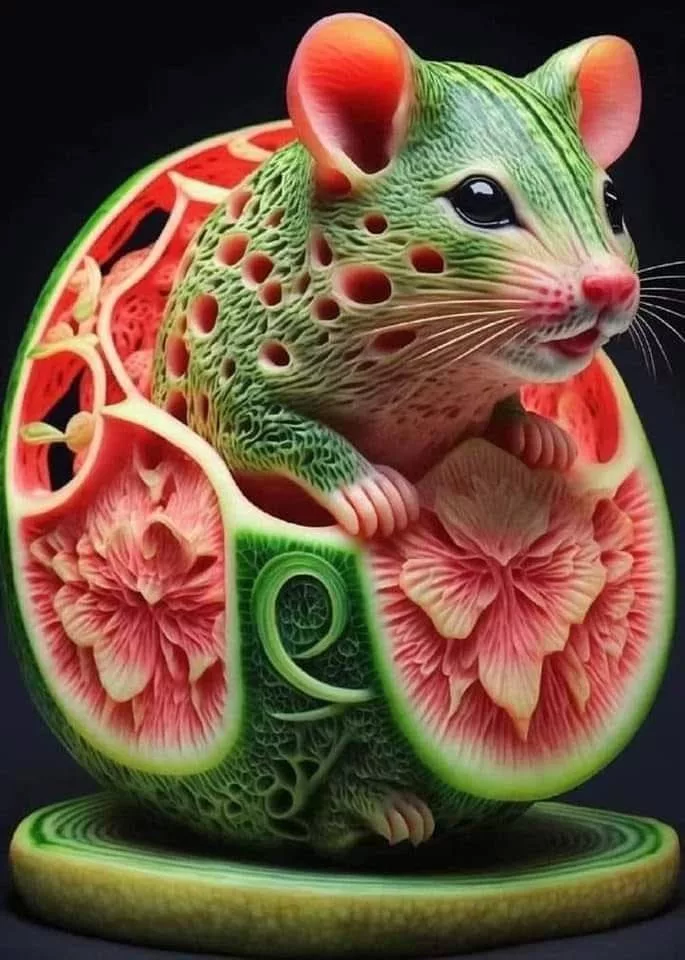
Learning the Art of Watermelon Sculpting
Methods and Equipment
Watermelon sculpting is a precise and imaginative process that demands a certain level of skill. Sculptors use a variety of tools, ranging from regular kitchen knives to melon ballers and specialized sculpting tools meant for intricate work. The secret lies in the careful control of these tools to shape the watermelon’s flesh while avoiding any damage to its fragile surface.
Finding the Perfect Watermelon
The right canvas is crucial. Sculptors often search for watermelons that are symmetrical in shape, have a firm rind, and no blemishes or soft spots. The perfect watermelon should be ripe enough to sculpt but not overly so, as a firmer texture allows for more detailed and long-lasting sculptures.
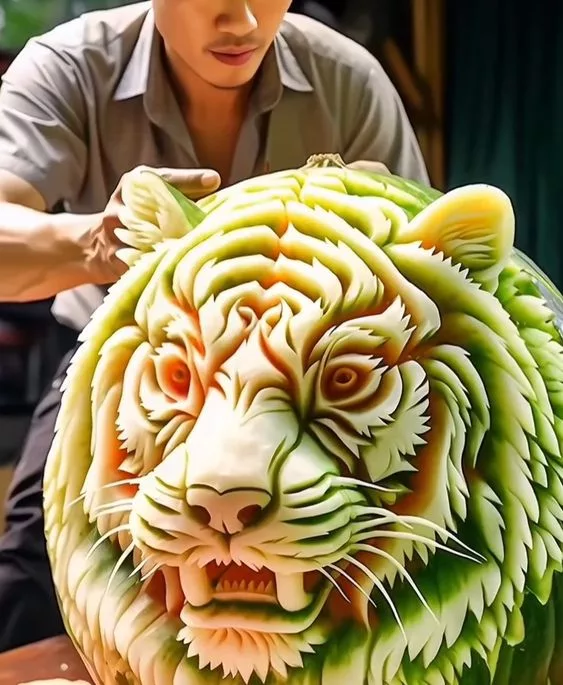
Steps for Carving Watermelons
Design Planning:
Artists typically start with a concept and may even sketch out their ideas before beginning the carving process. This plan helps guide them throughout the carving process.
Watermelon Preparation:
The watermelon is cleaned and dried, and sometimes emptied out. However, some artists choose to keep the watermelon intact to maintain its structural integrity, particularly for more intricate designs.
Outlining the Design:
The artist delicately etches the design onto the rind, requiring a steady hand and attention to detail.
Carving the Design:
Using specialized tools, the artist carefully carves along the outline, removing layers of the rind to create depth and contrast while utilizing the natural colors of the watermelon for effect.
Detailing and Finishing Touches:
In the final stage, the artist refines the details and adds finishing touches, such as smoothing edges, creating texture, or adding additional elements with other fruits or decorative items.
Each step in this technical process requires skill and patience, resulting in visually stunning works of art that reflect the dedication and creativity of the artist. This section provides insight into the technical side of watermelon carving, setting the stage for exploring its cultural and artistic dimensions in the following sections of the article.
Cultural Importance of Watermelon Carving
While watermelon carving is a form of artistic expression, it is deeply ingrained in cultural traditions worldwide. This section delves into the cultural significance of this artistic form and how it varies across different regions.
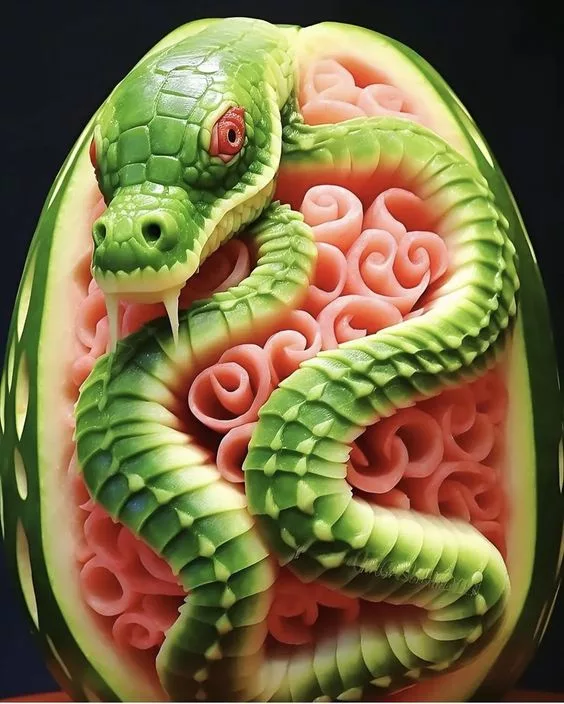
Watermelon carving has a significant role in various cultures worldwide. In Eastern cultures, it is considered an art form of great importance, often associated with special events and celebrations. These carvings carry symbolic meanings such as prosperity, good health, and fortune, making them more than just decorative pieces.
On the other hand, in Western cultures, watermelon carving has gained popularity as a culinary art form and is often seen at social gatherings. Although it may not hold the same traditional significance, it is admired for the skill involved in its creation and aesthetic appeal.
Watermelon carving is also prevalent in festivals and weddings in Asian countries, where it represents wishes for good luck and happiness. In the United States, it is a common sight at summer parties and Independence Day celebrations, symbolizing the joy and freshness of the season.
The evolution of watermelon carving styles reflects the blending of cultural influences. Traditional carvings focused on symmetrical patterns and religious symbols, while contemporary styles incorporate a broader range of themes, including pop culture references and personal narratives.
The adaptability and diversity of watermelon carving make it a unique art form, rich in cultural heritage, and continually evolving through the hands of skilled artists. Its blend of tradition and innovation makes it a timeless form of artistic expression that transcends borders and cultures.
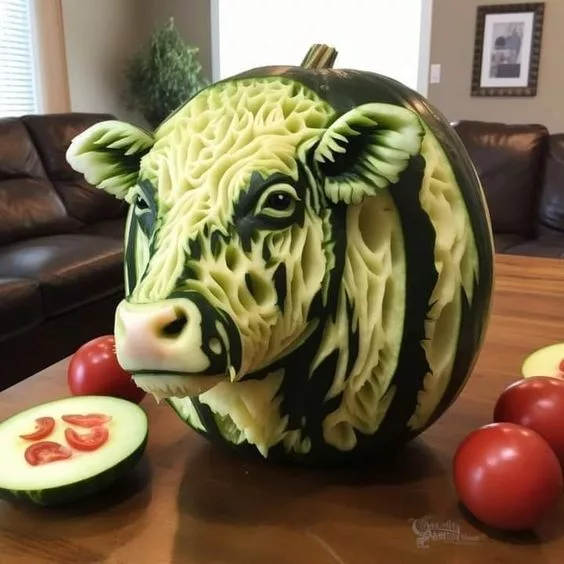
The art of watermelon carving is not stagnant, but constantly evolving with the influence of modern trends and technological advancements. Digital design software like 3D modeling has allowed for more intricate and precise designs that were once difficult to conceptualize. Social media platforms such as Instagram, YouTube, and Pinterest have played a key role in increasing the popularity of this art form by providing artists with a global audience to share their creations with and inspire others. Innovative carving tools, including those powered by electricity, have made watermelon carving more accessible to artists. As contemporary watermelon carvers blend traditional techniques with modern artistic trends, they create unique pieces that reflect their cultural heritage and personal artistic vision. The dynamic nature of this art form is illustrated by the incorporation of styles from different art movements, including realism, abstract, and pop art, into watermelon carving.
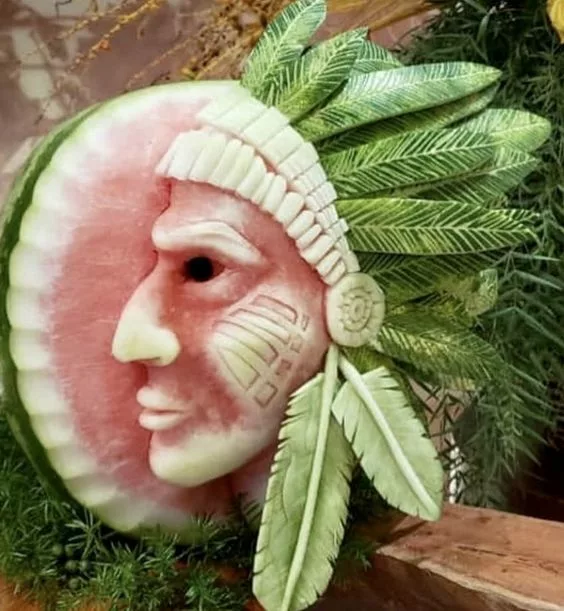
The popularity of watermelon carving has extended beyond cultural festivals and private events. It is now featured in corporate events, public exhibitions, and even competitive carving events, increasing its visibility and promoting a broader appreciation for the art form.
However, watermelon carving still faces several challenges, particularly regarding sustainability and the perishable nature of the medium. Artists must overcome obstacles such as the transient nature of the art form, demanding skill and precision, and lack of recognition as a legitimate form of artistic expression.
To address these challenges, artists and communities are implementing sustainable practices. They utilize the entire fruit, composting or consuming the unused parts, use eco-friendly and reusable carving tools, and promote the use of locally-sourced and in-season watermelons.
Watermelon carving is a visually appealing and delightful art form that requires addressing unique challenges for its future growth and acceptance as a true art form. This section highlights both the challenges and efforts made by artists and communities to ensure the art form’s sustainability and recognition.
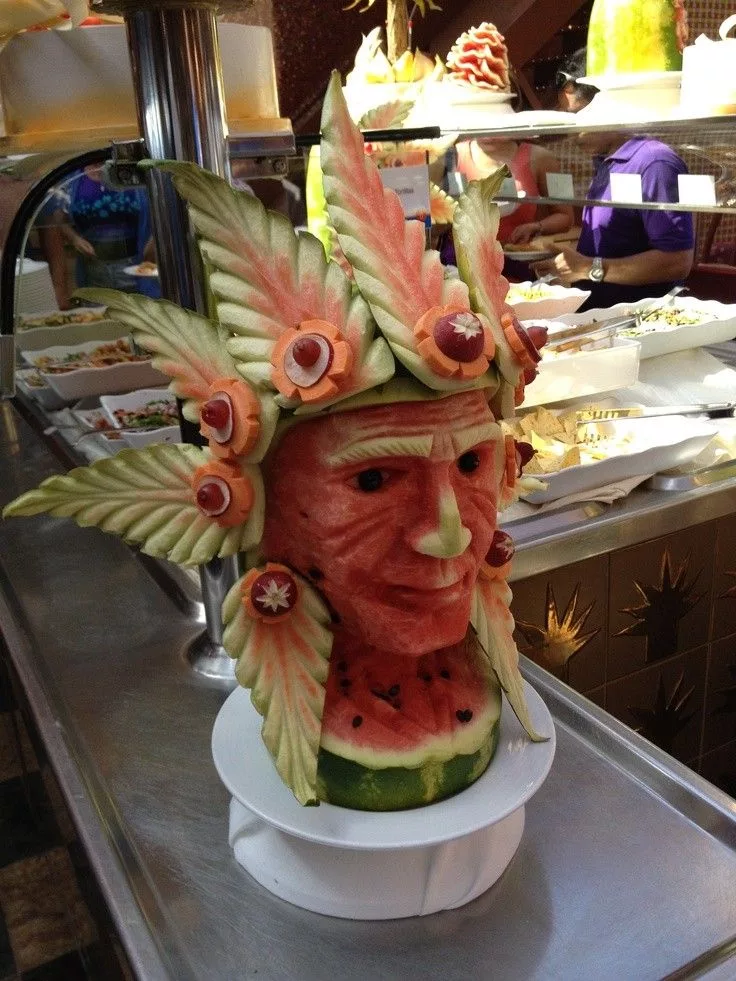
Discovering Watermelon Carving: Workshops and Educational Resources
The art of watermelon carving has been gaining popularity worldwide, and many individuals are now interested in learning this unique skill. This section aims to provide insights into the various resources available for aspiring carvers, as well as tips from experts in the field.
For those who prefer hands-on learning, there are local workshops available in many communities. These sessions are often led by experienced carvers, making them ideal for beginners who want to learn basic techniques and tool handling.
With the rise of digital learning, online tutorials and courses have also become increasingly popular. Many platforms offer courses that cater to all levels of skills, from entry-level to advanced. Video tutorials are often included in these courses, allowing learners to learn at their own pace and practice in their own time.
Those looking for an immersive cultural experience may want to consider joining a cultural exchange program. Some programs offer the opportunity to learn watermelon carving in countries where it is a traditional art form, providing a unique and enriching learning experience.
Whether you prefer a hands-on approach or learning through digital resources, there are plenty of opportunities available for individuals interested in discovering the world of watermelon carving.
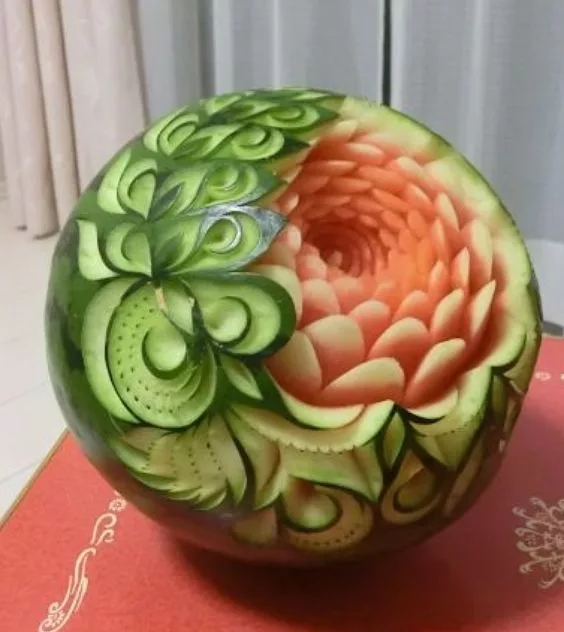
Suggested Tools and Resources
For those just starting in fruit carving, it’s best to begin with basic carving sets that include various knives and scoops. As one progresses, they can add more specialized tools to their collection. Books on fruit carving are beneficial resources for beginners and experienced carvers as they provide step-by-step instructions and design ideas. Online communities and forums are also a great way to network with other carvers, share tips, and stay inspired. To improve skills, it’s essential to practice regularly, start simple, learn from mistakes, and stay motivated by keeping up with other carvers’ work and exploring different styles.
In recent years, watermelon carving has evolved from a simple craft to a celebrated art form that captivates viewers with its blend of natural beauty and artistic skill. This transformation is a testament to the creativity and innovation of the carvers who have honed their craft over time.
Watermelon carving has a significant impact beyond its visual appeal. It connects us to cultural traditions, facilitates community through shared learning experiences, and challenges our preconceived notions of what constitutes art. As this art form gains popularity, we can expect even greater exploration and cultural exchange.
The proliferation of workshops, courses, and online resources dedicated to watermelon carving ensures that it will continue to evolve and inspire. Whether pursued as a hobby or a professional endeavor, watermelon carving offers a unique and fulfilling path for creative expression.
Ultimately, watermelon carving is about more than just the stunning end products. It’s about the process, the cultural connections, and the joy of transforming an ordinary fruit into something extraordinary. With continued innovation and artistic growth, the future of watermelon carving is ripe with possibilities and promises to leave a lasting legacy.
